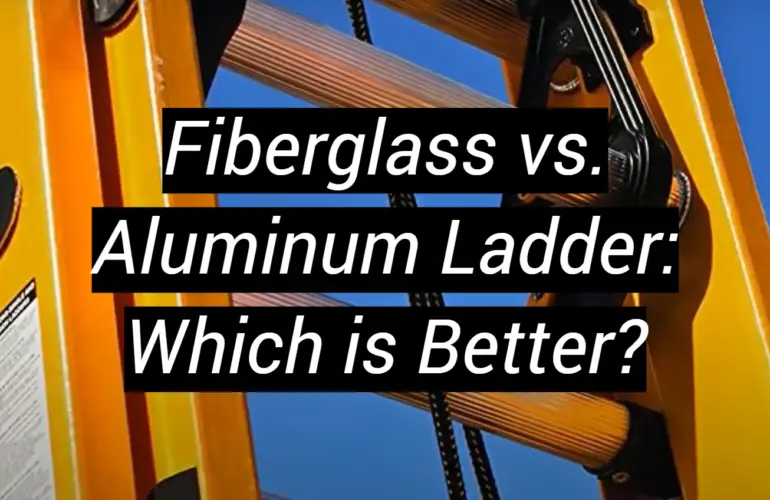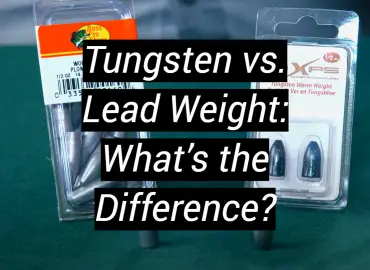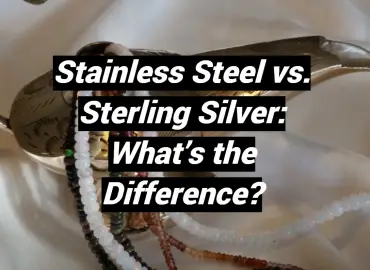When it comes to choosing a ladder, there are a lot of factors to consider. You need something that is strong enough to hold your weight while providing safety and stability for whatever task you’re trying to accomplish. Fiberglass vs aluminum ladders have been an ongoing debate for years; both offer benefits, as well as drawbacks. This blog post aims to provide a comparison between fiberglass and aluminum ladders. The goal is to assist you in making an informed decision when choosing one from the current market. Beyond simply comparing these two materials, we’ll discuss pricing, advantages in certain scenarios, durable construction approaches and more – giving a comprehensive overview of which material property makes it better than the other in particular settings. Ultimately whichever you select should suit your needs perfectly!
What Are Fiberglass Ladders?
Fiberglass ladders are among the most popular types of ladders. They are lightweight and easy to transport, making them a great option for ladder users who want a versatile and convenient ladder.
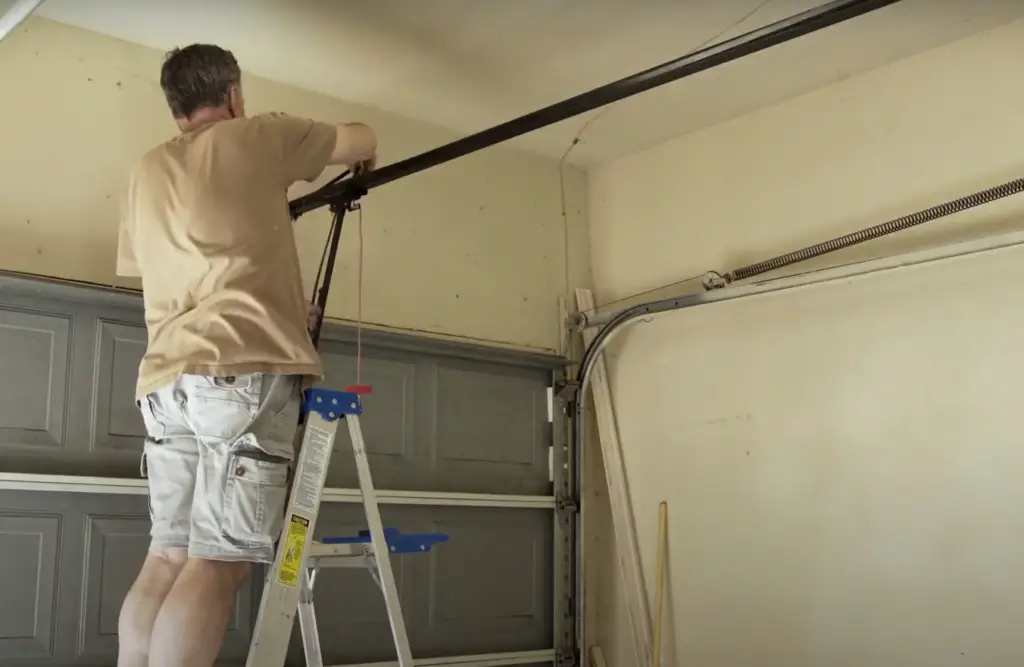
Compared to aluminum ladders, fiberglass ladders offer better electrical insulation, making them a suitable option for tasks involving electricity or working in proximity to high-voltage lines. Furthermore, fiberglass is resistant to environmental elements like humidity or extreme temperatures, lending it more durability compared to certain other materials.
What Are Aluminum Ladders?
Aluminum ladders are lightweight, durable and often the most affordable option. They are made from a strong aluminum alloy that is resistant to corrosion, allowing them to last for many years without needing replacement. The light weight of these ladders makes them highly portable, making them ideal for users who need to move their ladder frequently.
These ladders typically come in different heights and styles so you can find the perfect fit for your needs. However, due to their low density and strength they may not be suitable for heavier duty tasks such as painting or working with tools. These ladders are suitable for general household tasks such as changing light bulbs or reaching high shelves. [1]
Fiberglass vs. Aluminum Ladder
Cost
It can be a major factor when selecting a ladder.
Fiberglass ladders are more expensive but provide better stability and protection against electric shock hazards.Structure
The most crucial factor to consider when selecting a ladder. Fiberglass ladders are much heavier than aluminum, but they also offer superior strength and stability. This makes them ideal for working on rugged terrain or in hazardous environments, such as near electrical sources. On the other hand, aluminum ladders tend to be lighter and more maneuverable. They can be easier to transport to different locations since they don’t weigh as much. However, their lightweight construction means that they are not quite as strong or stable as fiberglass ladders.
Weight Capacity
The weight capacity of ladders is very important, as you don’t want to overload them and risk having the ladder break. Generally speaking, fiberglass ladders are able to handle more weight than aluminum ladders since they are stronger and sturdier.
Portability
When it comes to portability, aluminum ladders are usually the better choice. They weigh significantly less than fiberglass ladders, making them much easier to transport and maneuver around.

And since they tend to be smaller in size, they can fit more easily into tight spaces or small vehicles.
Comfort
When selecting a ladder, it’s crucial to consider its level of comfort as well. Fiberglass ladders are more comfortable because they have rungs that are equipped with anti-slip features for a secure grip. Plus, the heavy construction helps to reduce vibrations and minimize fatigue. On the other hand, aluminum ladders can feel very lightweight and wobbly when standing on them.
Toughness
When it comes to deciding between fiberglass and aluminum ladders, one of the most important factors to consider is their toughness. Fiberglass ladders are known for being tough and sturdy, thanks to their high-grade composite material construction which allows them to handle up to four times the weight capacity of traditional aluminum ladders. In addition, fiberglass ladders have a non-conductive design which prevents dangerous electric shocks from occurring when working around power sources. On the other hand, aluminum ladders are still considered relatively durable but may be prone to damage over time due to their light construction. [2]
Customization
Another important factor to consider is the level of customization available with either ladder option. Fiberglass ladders offer more versatility when it comes to customizing for specific needs or tasks, such as adding accessories and attachments. An aluminum ladder may allow for some minor adjustments but will generally lack the same level of flexibility that a fiberglass ladder provides.
Safety
Finally, safety should always be a top priority when selecting between ladder options. Fiberglass ladders are considered to be the safest option because they are designed with an extra level of protection against slips and falls. Their non-conductive features also make them the safer choice for anyone working around electricity or other hazardous materials. In comparison, aluminum ladders can become slippery if not maintained properly and may present an increased risk of shock due to their conductive nature.
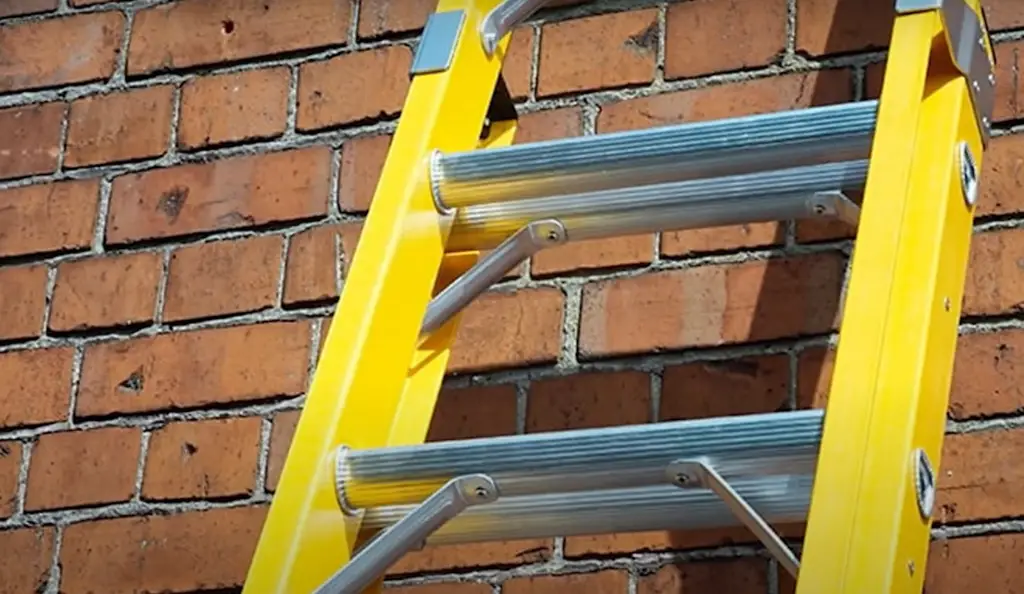
Overall, the choice between fiberglass and aluminum ladders comes down to personal preference and desired use. However, both options offer plenty of benefits and it’s important to consider all factors before making a purchase in order to find the best fit for your needs.
Pros and Cons of Fiberglass Ladders
Pros:
- Fiberglass ladders are typically more lightweight and easier to transport than aluminum ladders.
- They are also generally less expensive than their aluminum counterparts, making them a great option for those on a budget.
- The fiberglass construction of these types of ladders makes them nonconductive, making them the ideal choice for electric jobs or other hazardous tasks.
Cons:
- Unfortunately, fiberglass ladders tend to be less durable than aluminum and can become weakened with age.
- While they may be cheaper initially, the cost of replacing older models can quickly add up over time. Additionally, due to their lighter weight, they do not provide as much stability as an aluminum ladder, making them more prone to wobbling or swaying.
- Fiberglass ladders can also be affected by summer heat and winter cold, leading to cracking and breakage over time.
- Lastly, fiberglass ladders are not as widely available as aluminum models, meaning they may be harder to find in stores or online. [3]
Pros and Cons of Aluminum Ladders
Pros:
- Aluminum ladders are generally more durable than their fiberglass counterparts, allowing them to stand up to harsher conditions and heavier loads.
- They are also much sturdier when compared to fiberglass models, which is important for jobs requiring precision or balance.
- Additionally, aluminum ladders tend to be more widely available than fiberglass models, making them easier to find in stores or online.
Cons:
- Generally speaking, aluminum ladders can be quite a bit heavier than fiberglass ones, making them difficult to transport from one place to another without assistance.
- On top of that, they tend to cost more initially than fiberglass models, eating into a shopper’s budget.
- Lastly, aluminum ladders are not nonconductive and should be avoided when working with electricity or other hazardous materials.
Overall, both fiberglass and aluminum ladders have their own unique pros and cons that shoppers should take into consideration when making a purchase.
Depending on the project or job at hand, one type of ladder may be more suitable than the other. Ultimately, it’s important to find the right ladder for your needs so you can work safely and efficiently.
Maintenance Tips for Fiberglass Ladders
Fiberglass ladders are becoming increasingly popular since they are lighter than aluminum and do not conduct electricity. However, it is important to remember that fiberglass can be vulnerable to damage from harsh weather conditions. Here are some tips for keeping your fiberglass ladder in tip-top shape:
- Sunlight – Fiberglass is sensitive to ultraviolet (UV) radiation from the sun, so make sure you store your ladder out of direct sunlight when not in use. It’s also a good idea to apply a UV protectant or wax occasionally to help keep the material strong and prevent cracking.
- Cleaning – Dirt, dust, and debris can build up on the surface of your fiberglass ladder over time. To keep it looking nice, clean your ladder with mild soap and water using a soft cloth or sponge.
- Storage – When not in use, make sure you store your ladder in a cool, dry place out of direct sunlight. Avoid leaving it outside for extended periods of time where the sun can damage the material and cause fading or cracking.
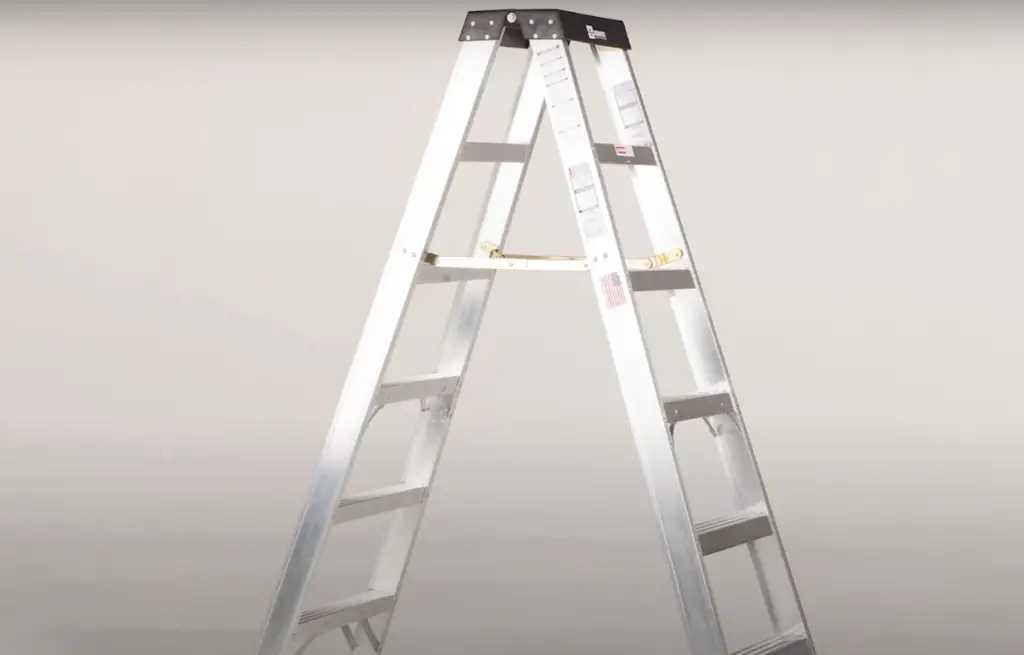
By following these simple tips, you can ensure that your fiberglass ladder will remain safe and strong for years to come! [4]
Maintenance Tips for Aluminum Ladders
If you own an aluminum ladder, there are some simple maintenance tips to help keep it in the best condition possible.
- Store Your Ladder Indoors When Not in Use: To prevent rust and other damage, store your aluminum ladder indoors when not in use. If storing outdoors is unavoidable, make sure that the ladder is completely dry before putting away and cover it with a protective tarp for additional protection against moisture.
- Clean the Aluminum Regularly: Wipe down the entire surface of your aluminum ladder with a soft cloth or sponge every few weeks to minimize dust build up and remove any dirt or debris stuck to it from usage. Mild soap can be used if needed but avoid using harsh abrasive cleaners as this can damage the finish.
- Inspect for Damage: Check your ladder periodically for signs of wear and tear such as loose connections, rust or scratches on the surface. This should be done before each use to ensure that it is in good condition and safe to climb.
- Tighten Connections If Needed: If you find any loose bolts or screws when inspecting your aluminum ladder, make sure to tighten them up so that the ladder remains secure and stable during usage.
By following these simple maintenance tips, you will help keep your aluminum ladder in the best condition possible so that it can last for many years to come!
Alternatives to Fiberglass and Aluminum Ladders
In addition to fiberglass and aluminum ladders, there are other materials that can be used for ladders, such as wooden, plastic and telescoping varieties. Wooden ladders are the oldest type of ladder, but they require frequent maintenance and upkeep to prevent them from rotting or cracking. Plastic ladders are lightweight and easy to transport, but may not have the same strength or durability as other types of materials.
Finally, telescoping ladders can be adjusted in length depending on the task at hand, making them an ideal choice for people who need a versatile ladder solution. Ultimately, it’s important to choose a ladder based on your needs and its intended purpose.
No matter what material you choose, make sure it is rated for safety standards and meets all necessary criteria for the job you plan to use it for. Additionally, be sure to read and follow all instructions on how to safely use your ladder. With the right ladder and safety precautions, you can ensure that any task in or around your home is completed safely and efficiently. [5]
Is Fiberglass a Health Hazard?
When comparing a fiberglass ladder to an aluminum ladder, it is important to consider whether the materials used could be hazardous. Fiberglass is composed of fine glass fibers that are woven together to form a strong but lightweight material. While this provides a strong and durable structure, there is evidence that suggests fiberglass may pose health hazards.

The primary concern when using any kind of fiberglass product is exposure to airborne particles.
Long-term inhalation of these particles has been linked to respiratory problems and other serious illnesses such as cancer and lung diseases. It is important to be cautious when handling fiberglass materials and ensure that you are wearing protective clothing and masks.In contrast, aluminum is a metal alloy composed of aluminum, silicon, copper, magnesium and other metals. While it does not pose the same health risks as fiberglass, aluminum is known to corrode over time which can cause structural damage. When choosing between an aluminum or fiberglass ladder, it is important to consider your safety first by understanding what potential health hazards may come with using either material. Additionally, you should also consider how long each type of ladder will last and how much maintenance they require in order to make the best choice for your specific needs.
Overall, both types of ladders offer advantages and disadvantages depending on the situation. Choosing between a fiberglass or aluminum ladder should be done based on your specific needs and safety concerns. With careful consideration, you can find the best ladder for your project that will serve you well for many years to come. [6]
Which Type of Ladders Should Not Be Used?
Both fiberglass ladders and aluminum ladders have certain limitations. Fiberglass ladders should not be used in environments where there is electricity, as the materials can become charged with electricity and cause a shock hazard.
Aluminum ladders should not be used around chemical or corrosive substances, as they could weaken the material of the ladder and cause it to break more easily. If you plan on using your ladder in any of these situations, then you should look for alternative solutions such as non conductive ladders or rope/chain access systems.
Additionally, both types of ladders are designed for specific weight capacities – always make sure that you do not exceed this limit when using them. When it comes to safety, taking all of these precautions is essential.

Overall, both aluminum and fiberglass ladders have their advantages and disadvantages, but the best type of ladder for your situation will depend on the environment in which you’ll be using it. Make sure to take into consideration all of the factors discussed above when choosing the best ladder for your needs.
FAQ
What are the disadvantages of fiberglass ladders?
Fiberglass ladders are more expensive than aluminum ladders, and they can be brittle in cold temperatures. They also have problems with static electricity buildup that can cause shocks when handling tools and other equipment. Additionally, fiberglass ladders are heavier than aluminum ones, making them more difficult to transport and store.
What are the advantages of fiberglass ladders?
Fiberglass ladders are non-conductive, which makes them safer for use around electrical sources. Their higher weight means they tend to be sturdier and better able to support heavy loads without wobbling or shifting. They also don’t corrode or rust like aluminum ones do. Finally, fiberglass ladders can be painted so that they blend into the environment better.
Are fiberglass ladders more expensive than aluminum ladders?
Yes, they are typically more expensive than aluminum ladders of similar height and strength. However, this increased cost can be offset by their superior durability and nonconductive properties in certain situations.
What should I consider when deciding between a fiberglass ladder or an aluminum one?
When deciding between a fiberglass ladder or an aluminum one, there are several factors to consider. The most important factor is the weight of the ladder. Fiberglass ladders tend to be much heavier than aluminum ladders. This can make it difficult to transport and maneuver them around the job site. Additionally, if you plan on using your ladder in areas with high moisture or electricity such as electrical work, then you should opt for a fiberglass ladder due its non-conductive properties. Another factor to consider when choosing between a fiberglass vs aluminum ladder is their stability and strength. Aluminum ladders are known for being lightweight yet still strong and stable enough for many jobs. However, fiberglass ladders provide an even higher level of strength and stability due to their composite construction. Finally, cost should be taken into account when deciding between a fiberglass ladder or an aluminum one.
What are the disadvantages of aluminum ladders?
The biggest disadvantage of aluminum ladders is that they are not as strong and stable as fiberglass ladders. Additionally, because aluminum is a metal, it can easily corrode or rust if exposed to the elements for an extended period of time. Aluminum ladders may also be less expensive than their fiberglass counterparts, but this cost savings may diminish over time due to regular maintenance needs. Overall, when choosing between a fiberglass ladder or an aluminum one, there are several factors to consider such as weight, stability, strength and cost. Ultimately, your choice should depend on the job you plan on doing and what features are most important to you.
Why buy a fiberglass ladder?
Fiberglass ladders are great for electrical work, as they do not conduct electricity. This is important if you are working with electrical wires at elevation or in tight spaces where metal could cause a hazard. Additionally, fiberglass is much lighter than aluminum and thus easier to transport and maneuver. The non-conductive nature of fiberglass also makes it an excellent choice for outdoor use, since it won’t rust or corrode over time from exposure to the elements. On the other hand, aluminum ladders provide some benefits that make them ideal for certain applications. Aluminum ladders are generally cheaper than their fiberglass counterparts and offer better durability against heavy loads or regular wear and tear. They also have better heat resistance which can be beneficial when used around hot objects, and they are often treated with special corrosion-resistant coatings to prevent rusting. However, aluminum ladders are heavier than their fiberglass counterparts and more prone to conductivity issues.
Is fiberglass cancerous?
No, fiberglass is not a known carcinogen. While it is composed of very small particles, they are not considered hazardous when used in the manufacturing of ladders and other construction materials. However, long-term exposure to airborne fibers can cause some health concerns such as skin irritation and respiratory problems, so it’s best to minimize contact with fiberglass products if possible. Additionally, workers should always wear proper protective gear when handling fiberglass materials. Ultimately, choosing between a fiberglass and aluminum ladder depends on the environment and application you plan to use it for.
Useful Video: Fiberglass vs Aluminum Ladder – Which Ladder Is Right for You?
Conclusion
Ultimately, the choice of an aluminum or fiberglass ladder comes down to personal preference. Both are strong and durable materials that can be used in both indoor and outdoor settings. Aluminum ladders are lightweight, making them easy to transport and store, but they also come with a higher risk of electrical conductivity if used near power lines. Fiberglass ladders have the advantage of being non-conductive and much more resistant to corrosion than aluminum ladders, making them ideal for use around water or wet areas.
Ultimately, it is up to you to determine which material works best for your home or business needs. Whichever ladder you choose, be sure to follow all safety precautions when using it. With proper care and maintenance, either type should provide years of reliable service.
Good luck and happy laddering!
References:
- https://www.yellowgate.com/aluminum-vs-fiberglass-which-ladder-is-right-for-you/#
- https://okeeffes.com/articles/ladder-selection-101-the-pros-and-cons-of-different-ladder-materials/
- https://dph.illinois.gov/topics-services/environmental-health-protection/toxicology/hazardous-substances/fiberglass.html
- https://todayshomeowner.com/tools/guides/fiberglass-vs-aluminum-ladder/
- https://sunsetladder.com/blog/fiberglass-ladder-vs-aluminum-ladder-choosing-the-right-one/
- https://www.laddersandscaffoldtowers.co.uk/blog/aluminium-ladders/which-ladder-is-better-aluminium-vs-fibreglass/

